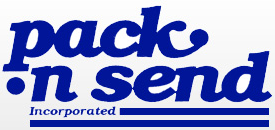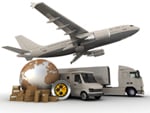Travelers who slog through long lines at airport security just to reach their seats might be surprised to learn that not all the cargo beneath their feet has been screened for explosives. But that's about to change.
As a result of the 9/11 Act endorsed by Congress in 2007, all cargo ferried aboard passenger aircraft originating in the United States must be screened, a mandate that federal officials say affects some 25 million pounds of cargo a day.
The law has ramifications for metro-area shippers and freight forwarders, who moved 24,825 tons of cargo -- including 4,263 tons of mail, as well as chemical materials, fruits and vegetables, high-tech machinery and electronic equipment -- out of Portland International Airport last year on passenger flights. It wouldn't take much for that kind of volume to interrupt timetables and back up cargo.
Next month, cargo headed for the belly of a passenger plane will be screened here before heading out through open doors in the back and down the tarmac for loading.
The law requires screening at the piece level, which means that shipments that are bundled together and shrink-wrapped on pallets or packed in containers have to be taken apart and reviewed and then repackaged.
The mandate also applies to shipments coming in from foreign countries, but T S A not expect to meet that requirement any time soon. It does not apply to all-cargo companies such as UPS and FedEx.
According to James Fotenos, a TSA spokesman, 47 percent of cargo is already being screened by certified freight forwarders.
He said the agency doesn't anticipate any major problems once the law fully takes affect, though acknowledged that "There may be minor back ups in some of the major gateway airports."
Shippers and air forwarding companies opposed the 2007 law, formally known as the Implementing Recommendations of the 9/11 Commission Act, arguing instead for a "risk-based" system that would call for screening only when there was a known security risk, but Congress opted for the 100 percent solution.
The law has been phased in. Last year, airlines were required to screen 50 percent of all cargo;in May of this year that went up to 75 percent.
In fact, nearly all cargo going on narrow-bodied aircraft is screened now. Most of the remaining cargo to be screened is shipped in the hold of wide-bodied aircraft.
The final 25 percent includes the most difficult to screen products, such as pharmaceuticals, electronics, and perishables.
The mandate doesn't specify the method of screening and allows for hand screening, or X-ray and other scanning types of systems. It requires that the screening for cargo basically be the same as the T S A expects for passengers' bags and carry-on items.
A recent survey by the Air Forwarders Assn. found that 64 percent of its members expect the airlines to handle the screening. But the airlines lack space and manpower, and airline officials have made it clear they will fly when they are ready, and if the cargo isn't screened, it will sit at the airport until it is.
A March 2009 Government Accounting Office report said that participation in the Certified screening program may be cost prohibitive for small freight forwarders, which constitute 80 percent of the industry.
In an effort to keep our customers informed about trends and laws in the cargo industry, we are publishing parts of the article written by Pack n send is publishing by James Mayer of the Oregonian.
For more information on freight and cargo shipping, please contact pack n send at 713 266 1450.





 We pick up & deliver worldwide, as well as in our backyard.
We pick up & deliver worldwide, as well as in our backyard.